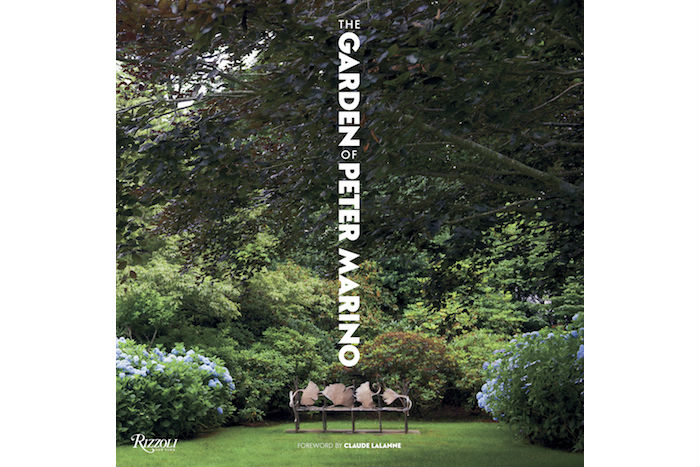Book Review: 'The Garden of Peter Marino'

Peter Marino’s Hamptons estate covers 12 acres and is a stark contrast to his biker-style persona, what with all the leather and tattoos. In a new art book, The Garden of Peter Marino (Rizzoli, $85), we get to see a slightly different side of the Harley-riding architect through an unprecedented look into his home landscape—a once indifferent property that Marino has transformed over the course of two decades.
A friend who visited Marino one June, when his garden is at its most beautiful, exclaimed, “This could only be the garden of an architect—and an American one at that!” Marino goes on to explain, in his introduction, that she made the comment because his gardens were created in “a series of different outdoor ‘rooms,’ all squares or rectangles, with everything organized on a single axis.” The Garden of Peter Marino is itself divided into 11 sections, each dedicated to a particular “room” of the vast expanse of the garden. There’s the “color-wheel” of Purple, Red, Yellow and Pink Gardens; the Azalea, Hydrangea and Rose Gardens; the Great Lawn, the only all-green space, which also features a 19th century bronze, “Diana with the Stag,” standing watch; the Forest, which Marino describes as “Harry Potter-esque…because the 100-year-old trunks of the zelkova trees are animal-like and fanciful;” the Allée, featuring two parallel walls of American holly trees and an owl totem; and the Orchard. The gardens also contain nearly 40 sculptures by Claude and François-Xavier Lalanne whimsically interspersed throughout. Claude Lalanne, author of the book’s forward, says of Marino: “Peter’s an exceptional man with a great talent, funny as well as totally nuts.”
The first three-quarters of the book presents photographer Jason Schmidt’s—whose own books, Artists and Artists II, are also well worth a purchase—photos of Marino’s first-class contemporary landscapes over all seasons and many years. He captures a rainbow of color in his images, which are presented in a variety of sizes on the page. There are instances of pictures taken at a distance and centered on about a quarter of one page, next to a full-page close-up of the same image. Many images are spread over two pages. There’s even a four-panel pull–out centerfold capturing the Azalea Crescent, which Marino says took him “almost 20 years of planting to create, adding more and more azaleas to the oval-shaped mounds each year.” Perhaps our favorite photo in this first section comes just one page later: a sculpture of a bull, nose-deep in azaleas; and on the next page, a two-page closeup of the same bull.

With all respect to Schmidt, it is the second section, “After the Storm,” with photographs by renowned Spanish interior photographer Manolo Yllera, that impresses the most. As Yllera says in his introduction, he was well aware, when asked by Marino to photograph the gardens, that doing so “is a tricky task because you have no control over light and you’re at the mercy of time.” The day of the shoot, a timid rain “soon erupted into a furious downpour.” The result is pure artistry. First, the paper changes from the finger-smudge prone sleek glossiness of the first 215 pages to a more textured, matte, more papery feeling paper, which only adds to the sepia–toned, now literally saturated landscapes. The images themselves are just as exquisite, but in a more haunting, less traditional garden-photo way.
“The French use gardens to show grandeur,” Marino says. “The English to show how things have endured for hundreds of years, but for me they’re all about fantasy.” For many on the East End, such awe-inspiring gardens are indeed a fantasy. If you fantasize about magisterial gardens, expertly curated, The Garden of Peter Marino is the book for you. It also fits nicely on any Hamptons coffee table, so get to your local bookstore and pick up a copy.










